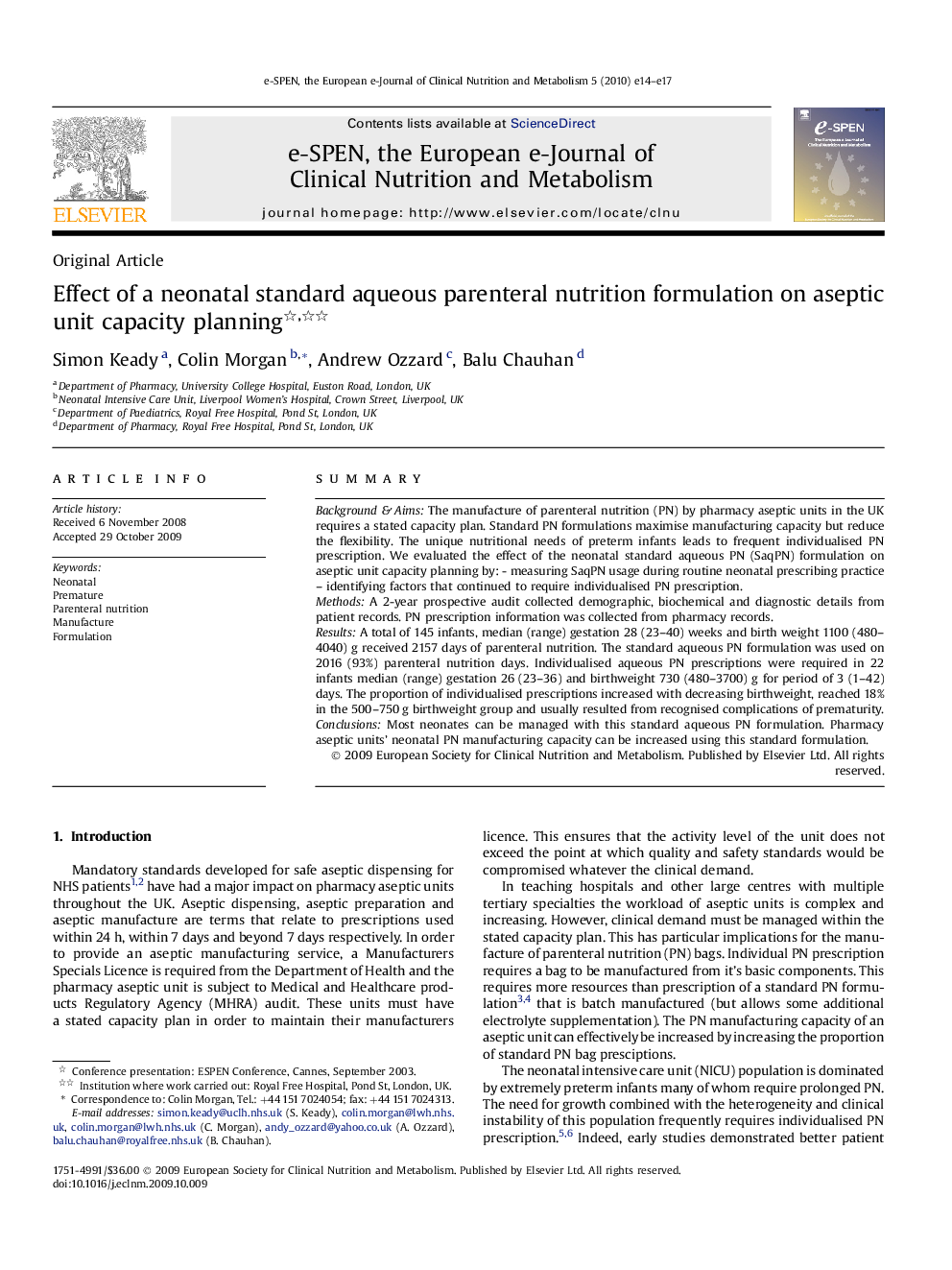| Article ID | Journal | Published Year | Pages | File Type |
|---|---|---|---|---|
| 2686316 | e-SPEN, the European e-Journal of Clinical Nutrition and Metabolism | 2010 | 4 Pages |
SummaryBackground & AimsThe manufacture of parenteral nutrition (PN) by pharmacy aseptic units in the UK requires a stated capacity plan. Standard PN formulations maximise manufacturing capacity but reduce the flexibility. The unique nutritional needs of preterm infants leads to frequent individualised PN prescription. We evaluated the effect of the neonatal standard aqueous PN (SaqPN) formulation on aseptic unit capacity planning by: - measuring SaqPN usage during routine neonatal prescribing practice – identifying factors that continued to require individualised PN prescription.MethodsA 2-year prospective audit collected demographic, biochemical and diagnostic details from patient records. PN prescription information was collected from pharmacy records.ResultsA total of 145 infants, median (range) gestation 28 (23–40) weeks and birth weight 1100 (480–4040) g received 2157 days of parenteral nutrition. The standard aqueous PN formulation was used on 2016 (93%) parenteral nutrition days. Individualised aqueous PN prescriptions were required in 22 infants median (range) gestation 26 (23–36) and birthweight 730 (480–3700) g for period of 3 (1–42) days. The proportion of individualised prescriptions increased with decreasing birthweight, reached 18% in the 500–750 g birthweight group and usually resulted from recognised complications of prematurity.ConclusionsMost neonates can be managed with this standard aqueous PN formulation. Pharmacy aseptic units’ neonatal PN manufacturing capacity can be increased using this standard formulation.
